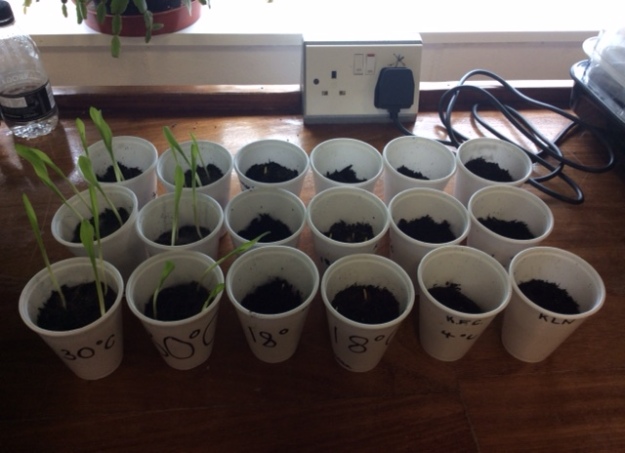Plant sex with the Year 9s and a veritable plague of misconceptions to overcome.
I’m always fascinated by why students persistently get the wrong idea about something and enjoy the challenge of trying to find alternative approaches to these topics.
With plant sex, quite apart from the usual “It’s Plants So It Must Be Boring” reaction, there’s confusion about what’s actually going on – they don’t see any parallels with animal reproduction – and confusion over what all the different structures and processes actually are.
So I start by getting them to dissect and draw a seed – some kind of bean is ideal. A drop of iodine emphasizes the starchiness. They’re quite happy to do this, though slightly mystified.
Time for discussion.
What is a seed?
A baby plant!
OK, where’s the baby?
Back to their drawings/dissections. Look! Most of them haven’t seen it. When they finally do, they realise that the “baby” actually takes up a tiny proportion of the overall seed.
So what’s the rest of it for?
We discuss the parallels with the English aristocracy, packing your kids off to boarding school at the age of 2 – plants just take it one stage further, thought they do, at least, provide a little picnic to sustain their offspring before they can fend for themselves.
We set up some germination experiments with sweetcorn and our little propagator trays.

As you can see, these work beautifully (takes a week, for anyone hoping to cram this into a single lesson!), and we will have a busy lesson calculating class means (n=18 for each temperature!) and plotting graphs with range bars, and discussing what we didn’t control (the 4’C ones were in the fridge – and therefore in the dark – not controlling light with a plant??? tut tut…), and saying, hmmm, look, this is rather similar to your enzyme graphs….
Back to the story of seeds…
So, that thing inside the seed, it’s not really a baby, is it? We need a different name. And, in fact, it’s an embryo.
So what needs to happen in order to make an embryo?
Pause. Giggles.
To much amusement, I stress that I’m not interested in the mechanics, I just want to know at the cellular level.
Yes, that’s right, a sperm needs to fertilise an egg.
At this point I say that I want them to look at an answer written under exam conditions. The test in question is on human reproduction, and the student is a Geranium. What, I ask, is biologically wrong with the following statements? (extracts from the following Powerpoint).
“Human males produce millions of sperm to increase the chance of fertilisation. The babies have legs and arms that help them crawl to find the egg to fertilise it…”
They think this is hilarious. I push them for a precise explanation. What mistake has this student made? It’s the same mistake in the next answer:
“Male and female frogs mate in ponds. The female can lay up to 2000 embryos a week. The tadpoles have tails that help them swim to the egg to fertilise it…”
Isn’t that silly? This poor student has confused babies with sperm, and eggs with embryos, and then tadpoles with sperm. True, the student IS a Geranium – but even so…
But what about this? Here is a human student writing about plant reproduction.
“Dandelion seeds are wind dispersed. The seeds have little parachutes that are caught by the wind to carry them a long way to increase the chance of fertilisation.”
This stops them in their tracks. They have to stop, and think, and some will say, “there’s nothing wrong with this…” But after a bit of thought, they realise that the human has made the same mistake as the Geranium – conflating embryos with gametes.
We then walk through the rest of the Powerpoint, followed by some questions, to emphasize the parallels between human and plant reproduction, as well as some of the key differences.
In the next lesson, they’ll have a think about why land animals have to mate, why that’s not an option for plants, and how they ingeniously get around the problem of dessication for the precious male sex cells…
Have a great Easter holiday.